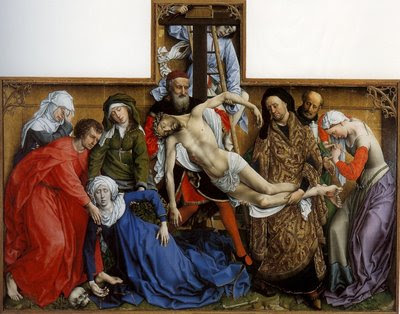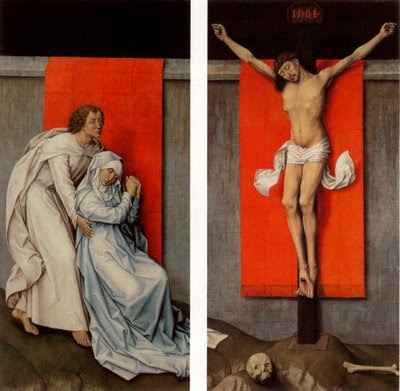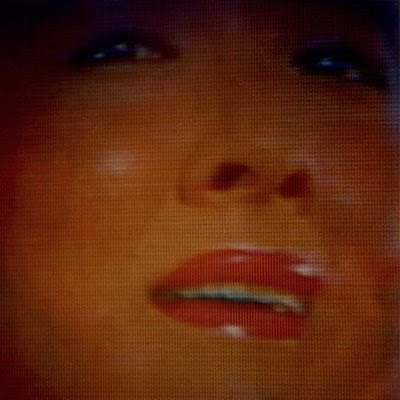Suburban Study (Twilight), 2009
Tuesday, June 30, 2009
Monday, June 29, 2009
Saturday, June 27, 2009
Thursday, June 25, 2009
Wednesday, June 24, 2009
Tuesday, June 23, 2009
Monday, June 22, 2009
Saturday, June 20, 2009
Tuesday, June 16, 2009

Kit, circa 1980
SX-70
It's interesting, having not looked at these SX-70 photographs in over twenty years, my basic approach doesn't seem to have changed much. Is this a good or a bad thing? Mind you, I stopped taking photos in the late 1980s & didn't use a camera again until about four years ago so esentially I'm sort of picking up where I left off…
Monday, June 15, 2009
Friday, June 12, 2009
Tuesday, June 9, 2009
Thunderstorm, 2:27 AM, 2009
I continue to take photos of the rain, in the night & as you can see, last night was one hell of a downpour but I think this one is still my favorite.
Monday, June 8, 2009
Friday, June 5, 2009
The Descent…

Rogier Van der Weyden
The Descent from the Cross, c. 1430-1435
Museo del Prado, Madrid
If you go here, you will find that the Prado has allowed Google Earth to make ultra high definition images of fourteen paintings considered by the museum to be the most significant works from their collection & The Descent from the Cross is one of them. If you haven't taken advantage of this I highly recommend taking a look. Be sure & check out Nicodemus' face; he's the one in black & gold holding Christ's legs. Van der Weyden's ability to capture realistic emotion made him one of the most acclaimed painters of his time & the grief stricken face of Nicodemus is a perfect example.
One can actually zoom in close enough to see the brushstrokes…
One can actually zoom in close enough to see the brushstrokes…
Wednesday, June 3, 2009
A Flemish Primitive…

Rogier Van der Weyden
Diptych of the Crucifixion, c. 1463-1464
Collection of the Philadelphia Museum of Art
It sometimes feels like the Renaissance is owned by the Italians but I have always had a soft spot for the northern painters; particularly the Flemish masters with their brilliant glazing technique & attention to detail. Having said that, this painting, while containing little of the detail that so often shines in early Northern Renaissance works, has always been a favorite of mine because of it's unusually minimal & highly stylized formal elements. The framing of the figures in each panel with a flat, undraped panel of brilliant vermilion cloth, broken only by the creased grid of fold lines is quite dramatic. The normally vivid coloring of Saint John & Mary's robes, red & ultramarine respectively, have been bleached out to create a theatrical highlighting of the figurative components in the overall composition. There is possibly a slight stylistic connection here to Fra Angelico's frescoes in the monk's cells at the monastery of San Marco in Florence ~ not too much of a surprise since Van der Weyden traveled to Italy in 1450 on a pilgrimage & would have most likely seen the frescoes. This could explain the fresco-like tones of the robes & simplicity of composition as well as the small number of figures: Flemish paintings tended to have been more densely populated. I myself have always thought the diptych had an almost Spanish look to it. All of this is, of course, interesting but the primary reason I find this work fascinating is this ~ every single time I look at it, a little voice in my head asks: "Where the hell is the third panel?" For some reason my gut repeatedly says to me that there should be another panel on the right. I've done a pathetically small bit of research on this & most historians believe it to be a two panel work & some actually feel that the two panels may have once been the side wings to a carved central panel which makes even less sense as Mary's robes continue over to the crucifixion painting. Obviously these paintings were meant to be side by side but I continue to think there was once another panel on the right.
Still, whether or not there's a missing right side, isn't it a striking work?
Monday, June 1, 2009

Portrait, 1984
Digitally scanned SX-70 photograph
Although atypical of the work I was making at the time, something about this photo has always intrigued me. I think it's the implied eroticism: the artificiality of the surface, the honey-colored skin tone & those slightly parted, perfectly edged lips with their gleaming highlights.
Subscribe to:
Posts (Atom)






